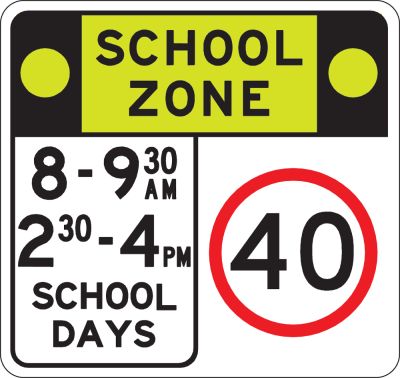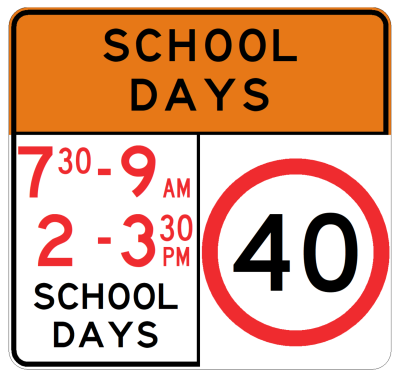Fixed and mobile speed cameras
Fixed and mobile speed cameras are used to help enforce speed limits on NSW roads. Here’s how they work and the rules you must follow.
Fixed speed cameras
Fixed speed cameras are used in high-risk locations such as tunnels or in areas with a history of severe crashes.
Purpose, locations and signs
Fixed digital speed cameras operate in NSW because of their proven ability to deter drivers from speeding at specific high-risk locations, thereby reducing crashes and preventing deaths and injuries.
Speed camera locations are listed on the Centre for Road Safety website.
Fixed speed cameras are installed at sites that meet criteria developed by Transport for NSW (Centre for Road Safety) in consultation with NRMA and the NSW Police. The criteria is based on crash rates and travelling speeds.
Every fixed speed camera is accompanied by highly visible advance warning signs.
The community is also advised of the installation of a speed camera via local media and the Centre for Road Safety website. Details include the camera location, crash history at the site or reason for the camera’s installation and the date of operation.
Warning signs
There are three warning signs installed on the approach to a regular fixed digital speed camera. These signs all display an image of a speed camera, a warning message and the regulatory speed limit. The three signs appear in the following order on approach to the speed camera:
- 'Speed camera 24 hours'
- 'Speed camera ahead' and/or 'speed camera in use'
- 'Heavy fines loss of licence'.
The use of camera advisory signs is not legally required in NSW but is part of a Transport for NSW policy to alert motorists that they are approaching a fixed digital speed camera.
How the cameras work
Fixed digital speed cameras detect the speed of vehicles by using approved electronic sensors that are embedded in the road surface. These sensors accurately measure the speed of the vehicle. If the speed of the vehicle exceeds the legal limit then a digital picture is taken of the offending vehicle.
If a vehicle is detected speeding, a digital image of the vehicle is recorded including the type and the number plate of the vehicle. Fixed digital speed cameras have the capacity to measure speed in both directions.
Digital images also include:
- date of the offence
- time of the offence
- location details of the camera which took the picture
- direction of travel of the offending vehicle
- speed of the offending vehicle
- speed limit applying to the road where the camera is situated at the time of the offence
- the lane that the vehicle was travelling in
- other security and integrity parameters.
Detection
The fixed speed camera system monitors both the speed and the lane of all passing traffic using an independent set of sensors for each lane.
The cameras are tested regularly to ensure each speeding vehicle is detected correctly.
Accuracy and reliability
A digital speed camera system includes a digital camera recording device and an associated speed-measuring device. The digital speed camera systems used in NSW undergo a comprehensive evaluation and testing procedure to ensure accuracy and reliability.
Qualified Transport for NSW operators inspect each camera system and verify its accuracy and proper operation before the start of the camera's operation and thereafter at regular intervals.
Cameras in NSW are subject to calibration and accuracy certification procedures for the approved traffic enforcement device, at least every 12 months, in accordance with Section 137 of the Road Transport Act 2013 and Clause 35 of the Road Transport (General) Regulation 2013.
There is also a requirement to perform a certification of the camera-recording device at 90-day intervals, in accordance with section 138 of the Road Transport Act 2013 and Clause 35 of the Road Transport (General) Regulation 2013. Inspections are also conducted after maintenance or repair of either camera recording and/or speed measurement devices.
Cameras in school zones
In NSW more than one million school students travel to and from school each day. The vast majority of students do so safely. The NSW State Government is committed to further increasing safety for children during school travel times.
Fixed speed cameras operate in school zones.
The school zones were selected according to a number of criteria concerning the risks young pedestrians are exposed to, including a combination of high traffic volumes, the level of pedestrian use and crash history.
All NSW school zones are sign-posted with regulatory signs that list the operating times of the school zones.
All school zone speed cameras operate 24 hours per day, seven days a week and detect vehicles exceeding the speed limit. They are also programmed to detect vehicles exceeding the 40km/h school zone speed limit during sign-posted school zone times.
See the NSW Centre for Road Safety website for information about when school zones are in force.

School zone signage and markings
NSW school zones are sign-posted indicating the operating times of the school zone. There are also large, bright yellow markings painted on the road showing the 40km/h speed limit.
In addition to the regulatory signs Transport for NSW (Roads) has also installed flashing lights (school zone alert systems) at a number of school zone sites, including all fixed speed camera sites that are located in a school zone.
Different school zone times
There are a small number of schools with different school zone times because they either start earlier or finish later than other schools. School zone signs at these schools display the times which apply.
Non-standard school zones are clearly identified as school zones and distinguished from standard zones by their design including an orange banner across the top and red lettering.

Pupil free or staff development days
Fixed digital speed cameras enforce the school zone 40km/h speed limit during the stated school zone hours on all notified school days. Pupil free days or staff development days fit into this category and in some cases there may still be students attending schools on these days.
There are also some instances where double demerits apply on a school day. This will usually happen when the day before a long weekend is also a school day.
See the NSW Centre for Road Safety website for information about when school zones are in force.
Mobile speed cameras
Mobile speed cameras help enforce speed limits on NSW roads.
Crash reduction and speed deterrence
Mobile speed cameras work like fixed speed cameras, however, they are moved from location to location in a vehicle.
Mobile speed cameras are effective because the unpredictability of the camera enforcement creates a general deterrence against speeding, leading to a crash reduction across the whole network – not just at camera locations.
For more information contact the Transport for NSW Camera Enquiry Line on 1300 782 230.